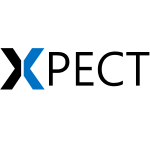Imagine what SMEs could do with their data if it was easy to access and analyse instead of stored across separate and siloed software and services?
You’ve got more data than you know what to do with. It’s stored in so many different tools, software packages, cloud services and devices that it’s difficult to make effective use of it.
Accounting, sales, inventory, website information and CRM data can be quite powerful when combined together to generate insights to inform business decisions, but often these systems are disjointed. For many, making use of business data means spending too much time manually integrating data and compiling reports. This can lead to inefficiencies, errors, and missed opportunities.
Consolidating this information into one business management platform would be a game-changer for SMEs.
Siloed data stagnates. Connected data works.
If you imagine combining key operational data from across your business into one platform, the over-arching benefit is obvious. You could easily generate reports and analysis to answer pressing business questions, identify trends over time and pinpoint areas for improvement.
When you consider the business objectives you could accomplish with these insights, things start to get exciting! Here are some examples:
- Accounting data contains a wealth of information about customers’ behaviour, preferences, and purchasing patterns. Analysis of this data would reveal your most profitable customers. Combining this with first-party data from your CRM or customer files would allow you to understand the segments of the market that are most interested in your products and services and generate customer profiles.
- You could leverage these profiles to design targeted marketing campaigns that resonate, attracting other similar customers and increasing conversion rates.
- Integrate a direct marketing platform, and you could leverage customer profiles to send existing customers personalised emails promoting only the products and sales events that are relevant to them. You could track this activity, as well as the open and response rates, and even incorporate automation so that different responses trigger the appropriate follow-up offer emails.
- Over time, transaction data can be combined with things like tracked web visits and email or enewsletter interactions, to inform the design and structure of a loyalty program. With this you could address customers that are critical to your bottom line with targeted incentives and rewards to encourage repeat business.
- By analysing sales data and margins, businesses can identify the products and services that drive revenue and profits. Combining that information with real-time inventory data such as overstocked items, orders in progress, supply chain shortages etc. as well as historical sales data showing periods of high and low sales activity, you could implement robust, data-driven pricing strategies. Determine when products should be discounted or when certain offerings should be phased out because they aren’t generating enough profit. Identify areas of price flexibility, which could be leveraged for customer offers and loyalty programs.
The bottom line is this: In order to grow and operate strategically and remain competitive, ambitious SMEs must leverage their data as efficiently and effectively as possible. Those that do not want to accept the limitations of siloed accounting software and other business tools that do not “talk” to one another should seek a business management platform that unites management, communication and reporting across finance, payroll, marketing, sales, website, human resources and operations.
Meet Xpect: Designed, developed, hosted and supported in Australia for Australian SMEs, Xpect is an end-to-end cloud-based platform that integrates business information into one easy to use system.
Watch this 2-minute Xpect Overview Video to find out how you can achieve greater transparency, visibility and control of your business.










